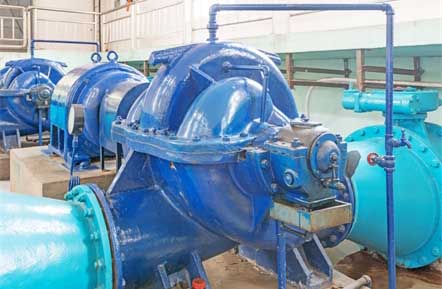Water Treatment Plants Require Emergency Power
Most water must be treated prior to use and consumption facilities are often backed up by a genertor.
Water Treatment Plants

In our home, we turn on the faucet and water flows. Start the dishwasher, and valves open to allow the flow of water. Travel to work, and use machines and equipment that need a water supply. It's commonplace to have clean, drinkable water on demand.
About 70% of the earth is covered with water. We tap into approximately 1% of this supply for our potable water (drinkable) supply. The remaining 69% could be used, but at this time it is not financially feasible to transform it into potable water.
Water treatment plants remove contaminants from drinking water. Treatment plants are supplied with water from man-made reservoirs, rivers, and natural lakes. This water must be treated to adhere to standards contained in the Safe Drinking Water Act (SDWA) enforced by the Environmental Protection Agency (EPA).
Suspended solids, bacteria, algae, viruses, fungi and minerals such as manganese and iron must be removed to comply with standards. The water is processed in the following manner:
- Pre-chlorination - Controls algae and stops biological growth
- Aeration - Removes dissolved iron and small amounts of manganese
- Coagulation for Flocculation - Sometimes known as slow sand filtration, polyelectrolytes are added to improve coagulation
- Sedimentation - Allows suspended solids to separate
- Filtration - Passed through media filter system to remove remaining particles suspended in water
- Disinfection - Kills bacteria, virus and other pathogens
If an emergency generator back up is not installed, and the power fails, all water treatment stops. When the tank(s) of treated water are empty, no water is available for distribution.
Water Supply Facilities and Emergency Backup Generators
Large electric pump(s) pressurize the water pipes with treated water. The suction side of the pump(s) is connected to a tank that contains the treated water. The discharge is connected to the main utility piping that supplies both residential and industrial facilities.
If power fails to the supply pump electric motor, the water system will not maintain pressure. Power failures to the treatment or supply system in a water treatment can cause loss of water to the utility system. Some effects of loss of utility water pressure are:
- No water for drinking, bathing or cleaning
- No water for facility fire safety systems
- No industrial water supply for machines
- No water supply for fire-fighting efforts
In addition to the loss of water processing and supply, security systems fail. Water treatment facilities can employ security systems to alert officials of terrorist activity.
Standby diesel generators like the example shown above are used to supply power to critical equipment in water treatment facilities. Complete systems can be employed to restore power to vital systems. Generator Source has provided generators, equipment, and various services to water treatment plans and all similar types of facilities. Give us a call and we can help.
administrator
| 4/1/2018 11:18:43 AM
|
0 comments